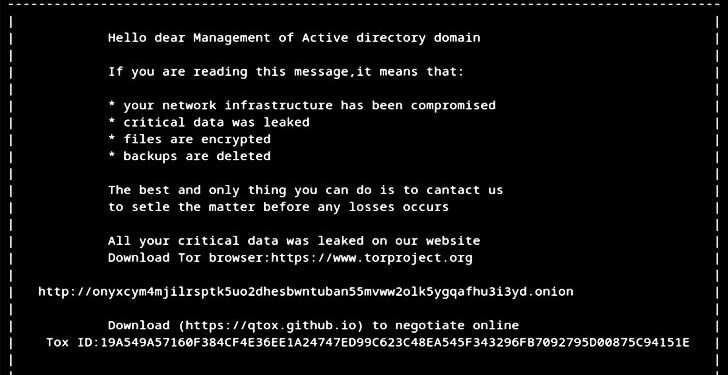# Helldown Ransomware Threat Expands: What VMware and Linux Users Need to Know
In the fast-paced world of technology, cybersecurity threats are continually evolving, presenting new challenges for IT professionals and everyday users alike. Recently, a new variant of the Helldown ransomware has emerged, expanding its notorious reach to target not only Windows systems but also VMware and Linux platforms. This expansion is a stark reminder of the persistent, adaptive nature of cyber threats and highlights the indispensable need for robust security measures across all digital environments.
## What’s New with Helldown? 🤔
Traditionally a threat to Windows systems, Helldown ransomware has now set its sights on two additional giants in the tech ecosystem: VMware and Linux. This isn’t just a minor tweak; it’s a substantial shift in the strategy of cyber attackers. By broadening their target range, they increase the likelihood of finding and exploiting weak points within enterprise infrastructures.
In terms of impact, this diversification poses an increased risk for businesses substantially reliant on virtualization and Linux-powered servers. These platforms, often seen as secure and reliable, are now vulnerable to disruptions that could threaten critical business operations and expose sensitive data.
## Why Target VMware and Linux? 🖥️
The choice to extend attacks to VMware and Linux isn’t random but a calculated move based on the platforms’ widespread adoption and importance in modern IT environments.
### **VMware’s Pivotal Role in Virtualization**
As the global leader in virtualization technology, VMware plays a critical role in modern data centers. Its ability to host multiple virtual machines on a single physical server makes it a prime target. Attacking VMware platforms allows cybercriminals to maximize disruption, potentially affecting every virtual machine hosted on a compromised server. This increases the attacker’s leverage to demand ransoms, knowing the organization’s operational dependency on these platforms.
### **Linux’s Expanding Presence**
Linux has long been hailed for its security and flexibility as an open-source system, making it highly popular among tech enthusiasts and companies. As Linux continues to grow its market share, it presents an enticing opportunity for attackers to find and exploit vulnerabilities within its vast ecosystem. Its popularity means that any successful attack could yield significant returns for cybercriminals while also causing widespread issues across countless organizations.
## Protecting Your Systems: Key Strategies 🛡️
Given the adaptations exhibited by ransomware like Helldown, preventative measures become paramount. Organizations must be proactive in securing their digital assets. Here are key strategies to consider implementing:
### **1. Regular Updates**
Ensuring that all systems and software are consistently updated with the latest security patches is imperative. This step reduces the number of potential vulnerabilities that ransomware can exploit, effectively lowering the risk of a successful attack.
### **2. Network Segmentation**
Network segmentation is a critical component in restricting the lateral movement of ransomware once it penetrates a system. By dividing the network into isolated segments, organizations can contain breaches—minimizing widespread damage and protecting essential resources.
### **3. Backup Systems**
Establishing a robust backup protocol is crucial. Regularly back up both data and systems, and keep these backups offline to ensure they remain untouched by ransomware. This strategy enables organizations to quickly recover without having to accede to ransom demands.
### **4. User Training**
Human error is often the weakest link in cybersecurity. Educate employees about the dangers of phishing and other social engineering tactics. Training programs are essential to reinforce safe online practices, decreasing the likelihood of accidental breaches.
### **5. Advanced Threat Detection**
Implementing advanced threat detection and response tools can help identify threats before they cause harm. These solutions offer real-time alerts and potentiate swift action to neutralize suspicious activities, preventing them from escalating into full-blown attacks.
## The Path Forward 🌐
In a world where threats like Helldown ransomware constantly adapt and intensify, staying informed and prepared is crucial. Organizations must be vigilant against the evolving tactics of cybercriminals and take decisive steps to secure their systems. As Helldown extends its reach to VMware and Linux, it serves as a wake-up call to the necessary preventive measures and vigilance central to safeguarding critical assets.
Whether you’re a tech-savvy professional or a small business owner, prioritizing cybersecurity and embracing a layered defense is the most reliable pathway to protection. In the thriving digital age, the philosophy stands: the best offense is a well-prepared defense. Stay informed, stay vigilant, and ensure your systems are fortified against any threats that harbor ill intentions towards your network. 🔒



















































